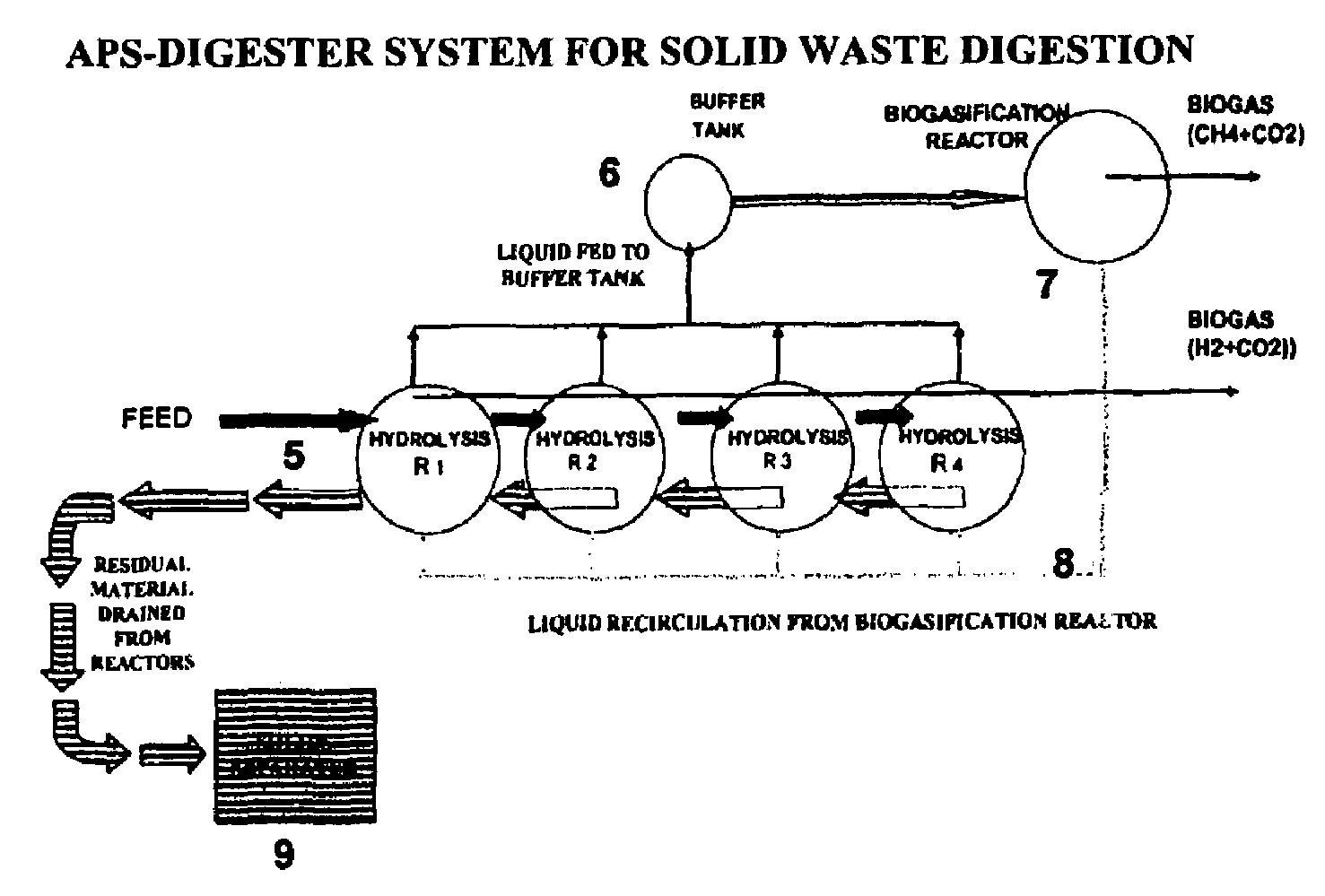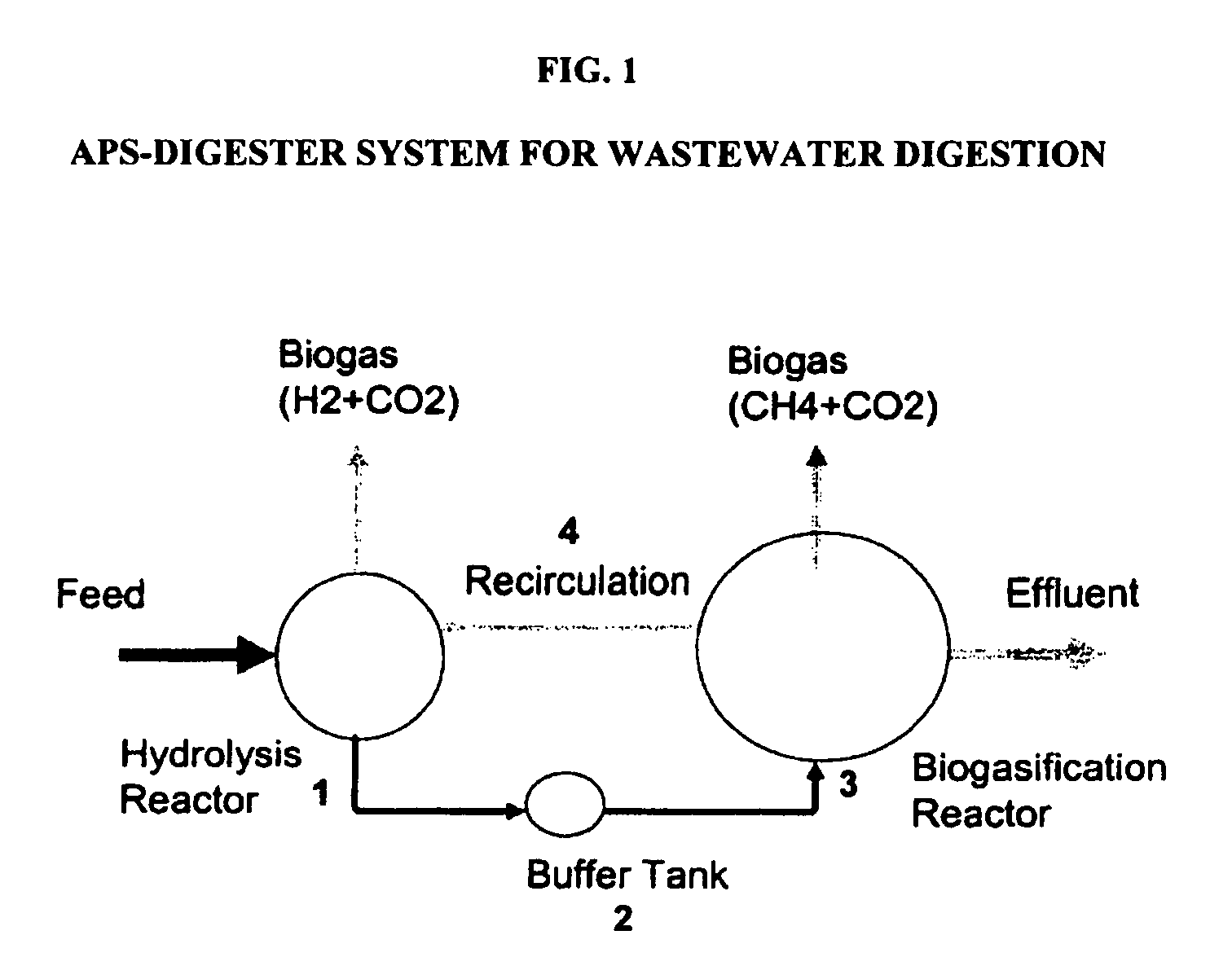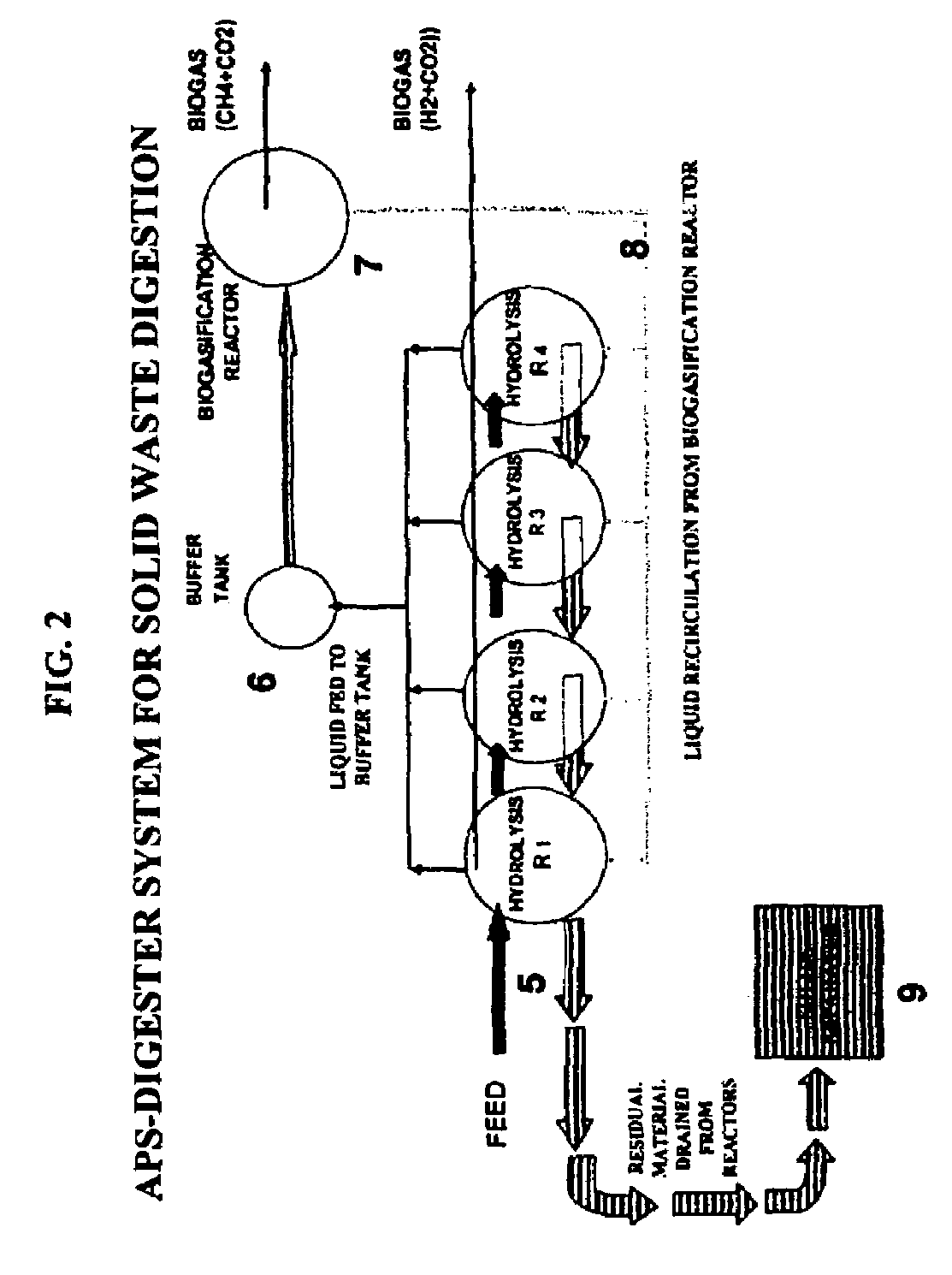Anaerobic phased solids digester for biogas production from organic solid wastes
a biogas and organic solid waste technology, applied in the direction of water/sewage multi-stage treatment, other chemical processes, separation processes, etc., can solve the problems of inefficient gas production, methane production, and previously developed two-phase anaerobic systems are not efficient systems, so as to achieve less air emissions, higher and more stable gas yields, and energy conversion efficiency. efficiencies
- Summary
- Abstract
- Description
- Claims
- Application Information
AI Technical Summary
Benefits of technology
Problems solved by technology
Method used
Image
Examples
example 1
1.1 Background
[0115]This study focused on the continuing development of Anaerobic Phased Solids Digester technology (APS-Digester), which was recently developed for digestion of solid waste as well as liquid waste (U.S. Pat. No. 6,342,378). Each hydrolysis reactor is operated as a batch reactor while the biogasification reactor is operated as a continuous reactor. The whole system was operated as a continuous system by staggering the feeding schedule of four batch hydrolysis reactors in sequential fashion. The feedstock material was retained in each hydrolysis reactor for a predetermined digestion period, and then the residual solids were removed from the reactor and processed through a solid-liquid separation device. The recovered liquid was put back into the hydrolysis reactor as the new feedstock is loaded. Depending on the moisture content of the feedstock, all or part of the recovered liquid was returned to the system.
[0116]This study was initiated to experimentally evaluate an...
PUM
| Property | Measurement | Unit |
|---|---|---|
| volume ratios | aaaaa | aaaaa |
| volume ratios | aaaaa | aaaaa |
| volume ratio | aaaaa | aaaaa |
Abstract
Description
Claims
Application Information
 Login to View More
Login to View More - R&D
- Intellectual Property
- Life Sciences
- Materials
- Tech Scout
- Unparalleled Data Quality
- Higher Quality Content
- 60% Fewer Hallucinations
Browse by: Latest US Patents, China's latest patents, Technical Efficacy Thesaurus, Application Domain, Technology Topic, Popular Technical Reports.
© 2025 PatSnap. All rights reserved.Legal|Privacy policy|Modern Slavery Act Transparency Statement|Sitemap|About US| Contact US: help@patsnap.com



